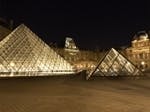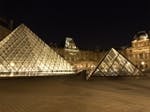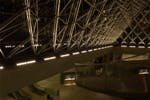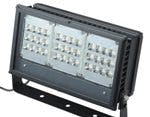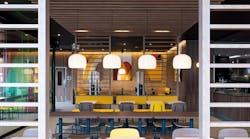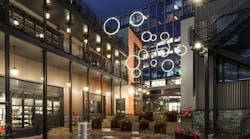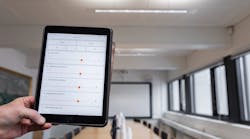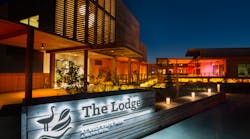This article was published in the February 2012 issue of LEDs Magazine.
View the Table of Contents and download the PDF file of the complete February 2012 issue.
+++++
Toshiba Corporation recently completed the first stage of a project to replace the external lighting at the Louvre Museum in Paris, France, with LED lighting. The first stage involved the lighting inside the iconic central Pyramid, as well as the three surrounding pyramidions (small pyramids) and a section of the facade of the Colbert pavilion, part of the main museum building. The lighting was switched on during a ceremony on December 6, 2011, by Norio Sasaki, president and CEO of Toshiba Corporation, and Henri Loyrette, director of the Louvre Museum.
The partnership between Toshiba and the Louvre Museum, which will run until 2023, was first announced in July 2010. In the next phases of the project the remaining facades of the Napoleon Court will be completed in the first half of 2012, and the courtyard will follow in 2013.
Overall, Toshiba will provide a total of 3200 LED light fittings to replace 4500 xenon light fittings. The LED retrofit will cut annual power consumption for the exterior lighting by 73%, from 392,000W to 105,000W. Six different fixture types, including 15-LED linear fixtures for the Pyramid (Fig. 2), and exterior floodlights (Fig. 3), were purpose-designed for the Louvre installation. The lighting had to meet various technical specifications, but also meet certain subjective and aesthetic requirements. Takayoshi Moriyama, a Toshiba lighting specialist, explained how the project differed from a typical one. “We would typically use tools such as specification drawings which would be finalized by the sales manager after consultation with the client,” he said. “We would then make a prototype of the fixture, re-check its optical and electrical performance and – barring any problems – progress from product development to product certification in a short time frame, with delivery date as the top priority.” Although Toshiba’s prototypes and specifications were approved by the Louvre’s technical directorate, they were then subject to a second, detailed screening by the museum Director and the Historical Monuments Committee of Paris. Moriyama said there was considerable debate about the size, shape and color temperature of the fixtures (2700K was eventually settled on). “We had to harmonize the fixtures with the building as part of the scenery,” he said.
Vision and branding
In a lighting seminar accompanying the switch-on ceremony, Masami Fukuda, president of Toshiba Lighting & Technology Corp, said that the company’s lighting revenue for the year ended March 31, 2011, was €5 billion, or 9% of total sales. He stated that Toshiba’s vision statement for the lighting business is “Lighting the way to warmth and harmony with people and the environment.” LED technology is seen as combining “people’s value creation” – which includes comfort, culture and emotion – with “environmental value creation,” which includes higher efficiency and life-cycle cost reduction compared with competing technologies.
As LED lamps become more prevalent, consumers will need to adjust to paying higher prices for lamps, with the promise of energy savings and longer life. They may also need to start to think of lighting in terms of being more like a consumer-electronics product, and less like a very-low-cost consumable item. As this shift occurs, the reassurance of a brand with a reputation for quality could prove to be a decisive factor when the consumer makes an investment in LEDs.
Vertical integration
Meanwhile, Séguineau claimed that, within two years, Toshiba has become “a key European player in the LED market.” The company’s strategy has been to focus first on commercial lighting, second on street lighting, and third on residential lighting – and as stated above, all its products for the European market are LED based. Toshiba is using a 100% indirect-sales model, using wholesalers and energy-saving companies for business-to-business sales; retailers for business-to-consumer sales; and selling LED light-engines to lighting manufacturers. In this last case, Séguineau said that Toshiba is looking to achieve “Toshiba inside” recognition in the branded products of other companies.
Toshiba is a supplier of many types of electronic components, including laser diodes, and is now increasing its internal production capacity for LED chips. Masami Fukuda told LEDs Magazine that “some of Toshiba’s LED lamps already use the company’s own LEDs,” and that the intention is to become more vertically integrated in the future.
